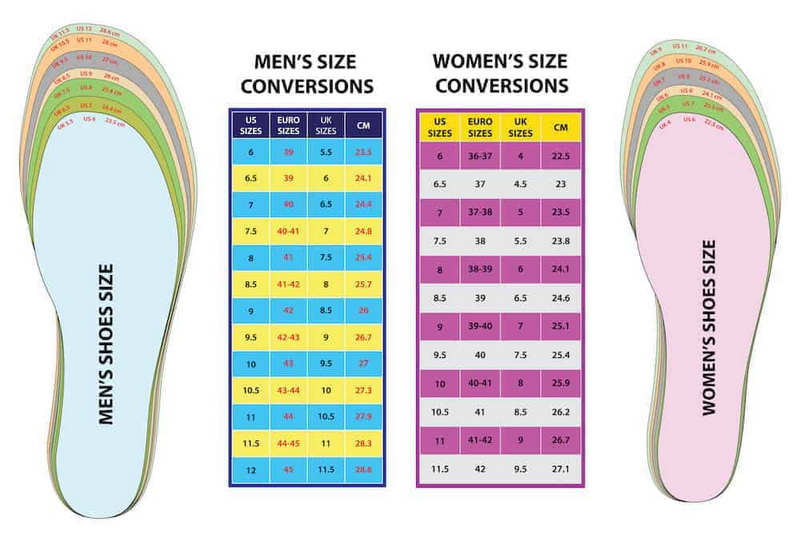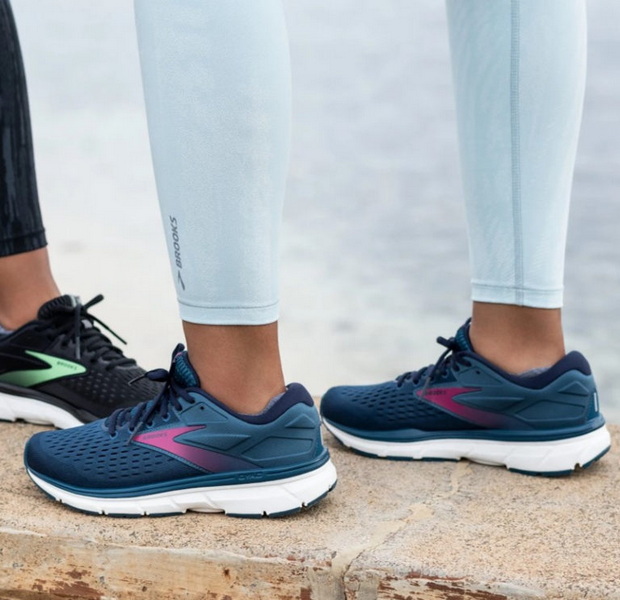Content Menu
● Size and Fit
>> Size Differences
>> Width Variations
>> Arch Support
● Design and Aesthetics
>> Style Differences
>> Heel Height
>> Color and Patterns
● Purpose and Functionality
>> Athletic Footwear
>> Specialized Shoes
● Cultural Influences
>> Societal Norms
>> Marketing Strategies
● Price Differences
>> Cost Variations
>> Value for Money
● Trends and Innovations
>> Evolving Styles
>> Sustainable Practices
● Conclusion
● Frequently Asked Questions
>> 1. What are the main differences in sizing between men's and women's shoes?
>> 2. Why do women's shoes often have higher heels than men's shoes?
>> 3. How do athletic shoes differ between men and women?
>> 4. Are there gender-neutral shoe options available?
>> 5. Why are women's shoes often more expensive than men's?
When it comes to footwear, the differences between men's and women's shoes are more than just a matter of size. These distinctions encompass various aspects, including design, fit, purpose, and even cultural influences. Understanding these differences can help consumers make informed choices when selecting shoes that not only fit well but also suit their style and needs. In this article, we will explore the key differences between men's and women's shoes in detail.

Size and Fit
Size Differences
One of the most obvious differences between men's and women's shoes is the sizing system. Men's shoes are generally larger and wider than women's shoes. For instance, a men's size 10 typically corresponds to a women's size 11.5. This difference in sizing is crucial for ensuring a proper fit, as wearing the wrong size can lead to discomfort and foot problems.
Width Variations
In addition to size, the width of shoes varies significantly between genders. Men's shoes are often designed with a wider fit, typically labeled as "D" width, while women's shoes are usually narrower, often labeled as "B" width. This distinction is important for individuals with wider or narrower feet, as it affects overall comfort and support.
Arch Support
Another critical aspect of fit is arch support. Women's shoes are often designed with a different arch support system to accommodate the generally lower arches of women's feet. This can impact comfort, especially for those who spend long hours on their feet or engage in physical activities. Proper arch support is essential for maintaining foot health and preventing issues such as plantar fasciitis.
Design and Aesthetics
Style Differences
The design and aesthetic appeal of men's and women's shoes also differ significantly. Women's shoes tend to feature a wider variety of styles, colors, and embellishments. From high heels to ballet flats, women's footwear often emphasizes fashion and trends. In contrast, men's shoes are typically more utilitarian, focusing on functionality and durability.
Heel Height
Heel height is another distinguishing factor. Women's shoes often come with various heel heights, from flats to stilettos, while men's shoes are predominantly flat or have minimal elevation. This difference not only affects style but also influences comfort and posture. High heels can create a more elegant silhouette but may lead to discomfort and foot strain if worn for extended periods.
Color and Patterns
When it comes to color and patterns, women's shoes often showcase a broader spectrum of options. Bright colors, floral patterns, and unique designs are common in women's footwear, while men's shoes tend to stick to more neutral tones and classic designs. This difference reflects societal norms and expectations regarding gender and fashion. However, recent trends have seen an increase in bold colors and patterns in men's footwear as well, indicating a shift in fashion norms.
Purpose and Functionality
Athletic Footwear
Athletic shoes are a prime example of how gender differences manifest in footwear. Men's and women's athletic shoes are designed with different biomechanics in mind. For instance, men's running shoes may be built to support a heavier frame, while women's running shoes often prioritize flexibility and cushioning to accommodate lighter body weights. This differentiation is crucial for performance, as the right shoe can enhance athletic ability and reduce the risk of injury.
Specialized Shoes
Certain types of shoes, such as hiking boots or work boots, are also designed with gender-specific features. Men's hiking boots may offer more rugged support and durability, while women's versions might focus on lighter materials and a more tailored fit. This specialization ensures that the shoes meet the specific needs of each gender during various activities. For example, women's hiking boots may have a narrower heel and a more contoured fit to provide better stability on uneven terrain.
Cultural Influences
Societal Norms
Cultural influences play a significant role in the design and marketing of men's and women's shoes. Societal norms often dictate what is considered appropriate footwear for each gender. For example, high heels are often associated with femininity and formal occasions, while sneakers are seen as more gender-neutral. This cultural context shapes consumer preferences and influences purchasing decisions.
Marketing Strategies
The marketing strategies employed by shoe brands also reflect these cultural differences. Women's shoes are often marketed with an emphasis on style and fashion, while men's shoes may focus more on performance and durability. This distinction can influence consumer perceptions and purchasing decisions. Brands often use targeted advertising to appeal to the specific interests and values of each gender, further reinforcing these differences.

Price Differences
Cost Variations
Another factor to consider is the price difference between men's and women's shoes. In many cases, women's shoes can be more expensive than men's, particularly in the fashion segment. This price disparity can be attributed to the additional design elements and materials used in women's footwear. Additionally, the fashion industry often places a premium on women's styles, leading to higher prices for trendy or designer options.
Value for Money
When purchasing shoes, consumers often seek value for money. Understanding the differences in construction, materials, and design can help individuals make informed choices that align with their budget and needs. It's essential to consider not only the initial cost but also the longevity and comfort of the shoes, as investing in quality footwear can save money in the long run.
Trends and Innovations
Evolving Styles
The footwear industry is constantly evolving, with new trends and innovations emerging regularly. In recent years, there has been a growing trend towards gender-neutral footwear, with many brands offering unisex options that cater to a broader audience. This shift reflects changing societal attitudes towards gender and fashion. Consumers are increasingly looking for versatile shoes that can be worn by anyone, regardless of gender.
Sustainable Practices
Sustainability is another important consideration in the footwear industry. Many brands are now focusing on eco-friendly materials and ethical manufacturing practices. This trend is evident in both men's and women's shoes, as consumers increasingly prioritize sustainability in their purchasing decisions. Brands that adopt sustainable practices often appeal to environmentally conscious consumers, leading to a positive brand image and increased sales.
Conclusion
In conclusion, the differences between men's and women's shoes extend far beyond mere size. From fit and design to purpose and cultural influences, these distinctions play a crucial role in how footwear is created and marketed. Understanding these differences can empower consumers to make informed choices that enhance their comfort, style, and overall satisfaction with their footwear.
As the footwear industry continues to evolve, it will be interesting to see how these differences adapt to changing societal norms and consumer preferences. Whether you are shopping for athletic shoes, formal wear, or casual footwear, being aware of the distinctions between men's and women's shoes can help you find the perfect pair that meets your needs.

Frequently Asked Questions
1. What are the main differences in sizing between men's and women's shoes?
Men's shoes are generally larger and wider than women's shoes. A men's size 10 typically corresponds to a women's size 11.5. Additionally, men's shoes are often labeled with a "D" width, while women's shoes are usually labeled with a "B" width.
2. Why do women's shoes often have higher heels than men's shoes?
Women's shoes often feature higher heels as part of fashion trends and societal norms that associate femininity with elegance and style. High heels can enhance posture and create a more elongated silhouette, but they may also lead to discomfort if worn for extended periods.
3. How do athletic shoes differ between men and women?
Athletic shoes are designed with different biomechanics in mind. Men's running shoes may provide more support for a heavier frame, while women's running shoes often prioritize flexibility and cushioning to accommodate lighter body weights.
4. Are there gender-neutral shoe options available?
Yes, many brands now offer gender-neutral or unisex shoe options that cater to a broader audience. This trend reflects changing societal attitudes towards gender and fashion, allowing consumers to choose footwear based on personal preference rather than gender.
5. Why are women's shoes often more expensive than men's?
Women's shoes can be more expensive than men's, particularly in the fashion segment, due to additional design elements and materials used. The fashion industry often places a premium on women's styles, leading to higher prices for trendy or designer options.

















